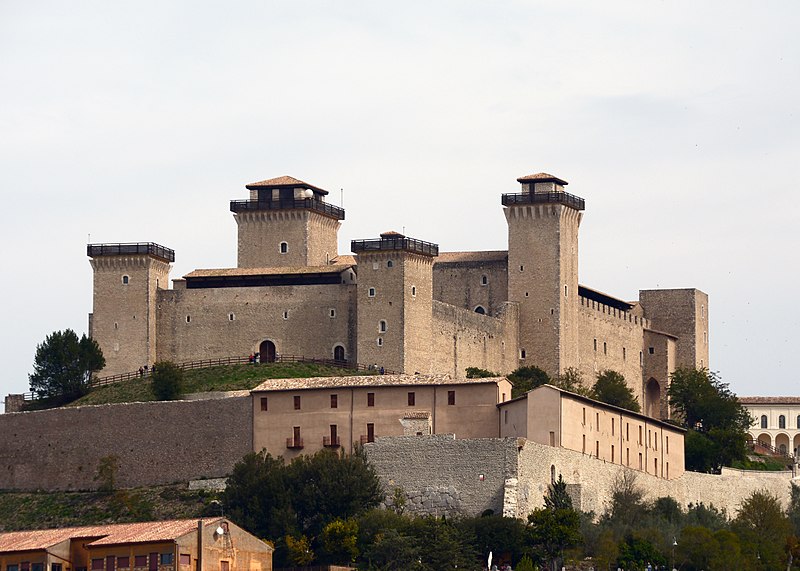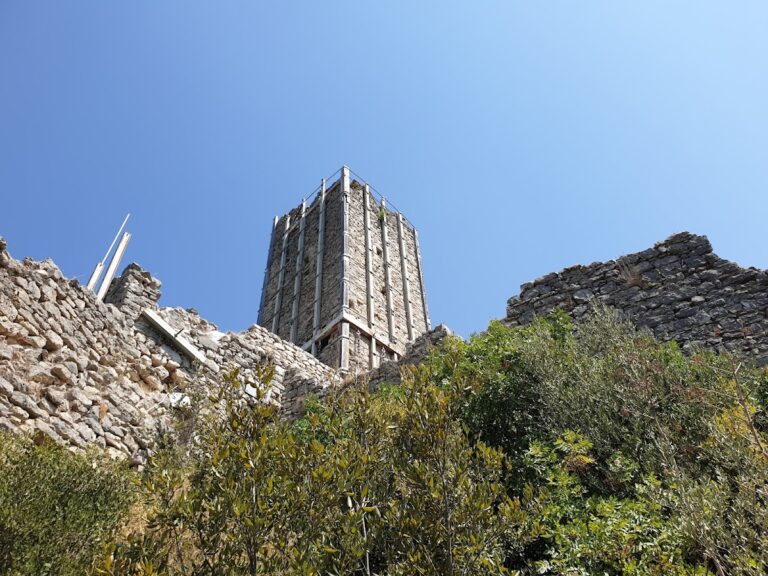Rocca Albornoziana: A 14th-Century Fortress in Spoleto, Italy
Visitor Information
Google Rating: 4.5
Popularity: Medium
Google Maps: View on Google Maps
Official Website: www.musei.umbria.beniculturali.it
Country: Italy
Civilization: Medieval European
Remains: Military
History
The Rocca Albornoziana is a fortress situated on Sant’Elia hill in the municipality of Spoleto, Italy. It was built by the papal authorities in the 14th century to establish firm control over the central Italian territories.
Construction began in 1359 under Cardinal Egidio Albornoz, a Spanish cardinal dispatched by Pope Innocent VI amidst the Avignon Papacy. His mission was to restore papal dominion in central Italy, an area that had grown politically fragmented. Between 1359 and 1370, the fortress was erected to serve both military and administrative purposes, representing a renewed papal presence on the strategic hill overlooking Spoleto.
During the following centuries, the Rocca functioned as a defensive stronghold and official residence for the papal governors who administered the city and its surroundings. It also hosted several notable visitors, including Pope Boniface IX in 1392. Later, in 1449, Pope Nicholas V sought refuge there during the Roman plague. The fortress was furthermore associated with Lucrezia Borgia, who stayed at the site on various occasions.
From the 16th century, the fortress gradually lost its strategic importance as military and administrative needs evolved. By 1764, papal governors relocated their residences into Spoleto’s city walls, signaling a shift away from the Rocca. Subsequently, the fortress was converted into a prison in 1817, a role it maintained until 1982. In the early 2000s, efforts were undertaken to restore the structure, and since 2007 it has functioned as the home of the Museo Nazionale del Ducato di Spoleto, blending its historical legacy with modern cultural uses.
Remains
The Rocca Albornoziana sits on a rectangular footprint measuring roughly 133 by 33 meters, built primarily from stone. It features six large towers, including four at the corners and two more connected centrally by the main body of the fortress, effectively dividing the internal space into two principal courtyards. This robust layout reflects its original design as a military fortress while accommodating administrative functions.
The larger courtyard, called the Cortile delle Armi, originally served as a staging ground for troops. Adjacent to it lies the Cortile d’Onore, the more formal courtyard which housed the city governors and their offices. Surrounding the Cortile d’Onore is a double loggia—an open arcade on two levels—attributed to the Renaissance architect Bernardo Rossellino and commissioned by Pope Nicholas V. At the courtyard’s heart stands a six-sided well, positioned above a large cistern designed to collect rainwater, an essential feature ensuring a secure water supply during sieges.
A vaulted passage connects the two courtyards, adorned with frescoes painted between 1572 and 1575. These frescoes display the coat of arms of Pope Gregory XIII as well as the emblems of six cities from the Papal States, including Porto d’Anzio, Perugia, Orvieto, Ripatransone, Spoleto itself, and one city that remains unidentified.
Inside the fortress, the Salone d’Onore serves as the main ceremonial hall intended for banquets and official events. Although its vaulting and decoration were never fully completed, it remains the largest interior space within the Rocca. Another significant interior feature is the Camera Pinta, located within the main tower, which contains two cycles of frescoes dating back to the late 14th and early 15th centuries. These artworks provide a notable example of early Renaissance painting linked directly to the fortress’s history.
Thanks to extensive restoration work completed in the early 21st century, much of the Rocca Albornoziana’s stone construction and artistic decorations survive in a well-preserved condition, allowing visitors and scholars alike to appreciate the site’s historical and cultural significance.







